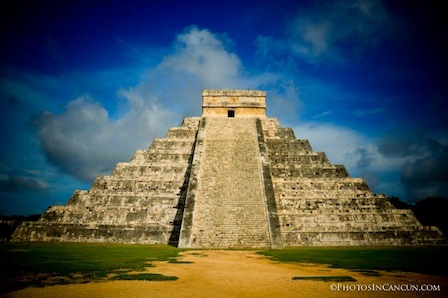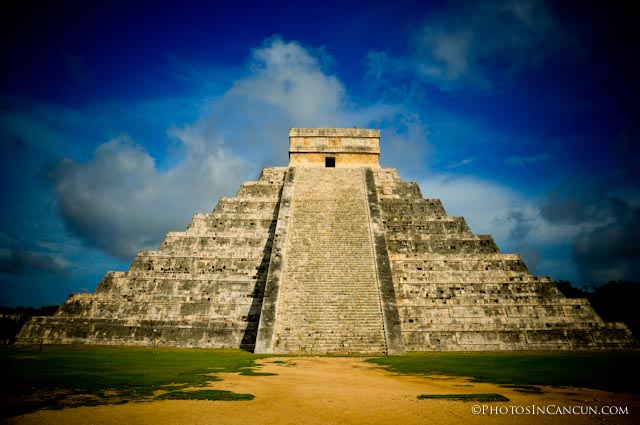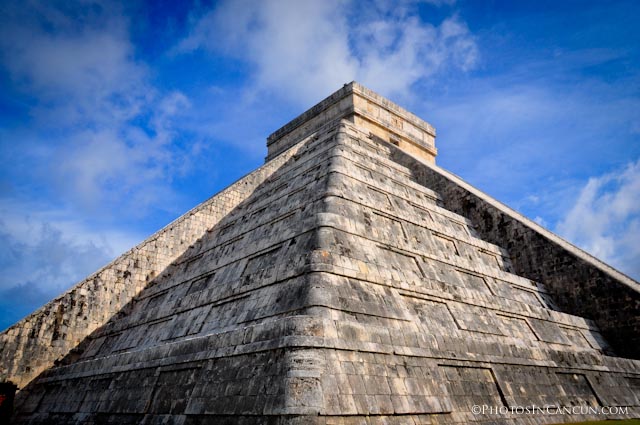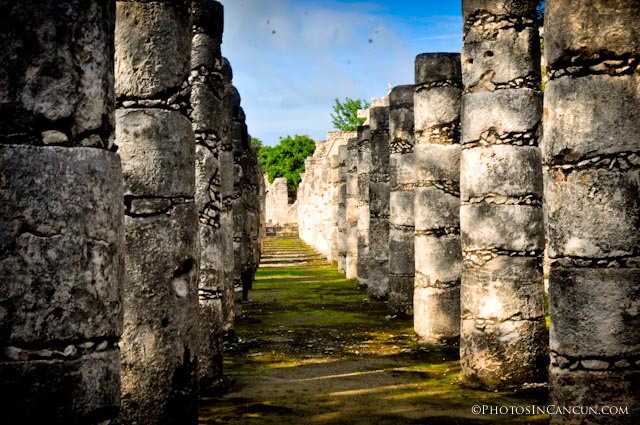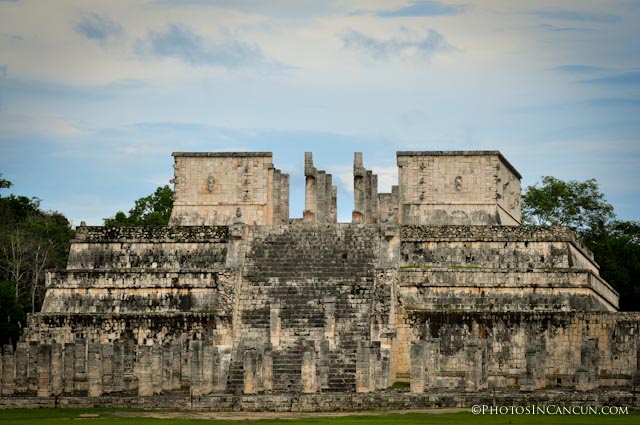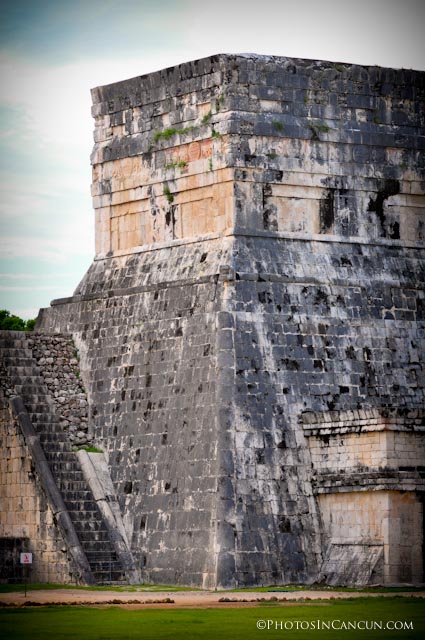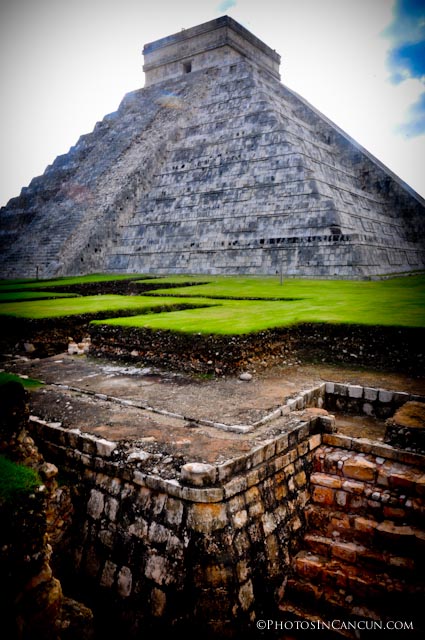Chichen Itza, a UNESCO World Heritage Site, is the second-most visited of Mexico’s archaeological sites and today is a magical day at Chichen Itza we went to see the light-and-shadow effect on the Temple of Kukulcan in which the feathered serpent god supposedly can be seen to crawl down the side of the pyramid. The process takes some time as we began to witness the phenomenon when a very large overcast cloud blocked the sun from casting the true shadow that runs the side of the Temple. This newly named “7 wonders of the world” is a fantastic day trip from Cancun or the Mayan Riviera with constant tours and buses leaving to visit the grounds daily. It really is something you must see with your own eyes to appreciate the enormity of the site. You are not permitted to climb the ruins any longer and tour guides are available.
Dominating the center of Chichén is the Temple of Kukulkan (the Maya name for Quetzalcoatl), often referred to as “El Castillo” (the castle). This step pyramid has a ground plan of square terraces with stairways up each of the four sides to the temple on top. On the Spring and Autumn equinox, at the rising and setting of the sun, the corner of the structure casts a shadow in the shape of a plumed serpent – Kukulcan, or Quetzalcoatl – along the west side of the north staircase. On these two annual occasions, the shadows from the corner tiers slither down the northern side of the pyramid with the sun’s movement to the serpent’s head at the base.
Temple of the Warriors
The Temple of the Warriors complex consists of a large stepped pyramid fronted and flanked by rows of carved columns depicting warriors.
At one end of the Great Ball Court is the North Temple, popularly called the Temple of the Bearded Man. This small masonry building has detailed bas relief carving on the inner walls, including a center figure that has carving under his chin that resembles facial hair.
Mesoamerican cultures periodically built larger pyramids atop older ones, and this is one such example. In the mid 1930s, the Mexican government sponsored an excavation of El Castillo. After several false starts, they discovered a staircase under the north side of the pyramid. By digging from the top, they found another temple buried below the current one. Inside the temple chamber was a Chac Moolstatue and a throne in the shape of Jaguar, painted red and with spots made of inlaid jade All information thanks to WikiPedia All Images © Photos In Cancun 2010

